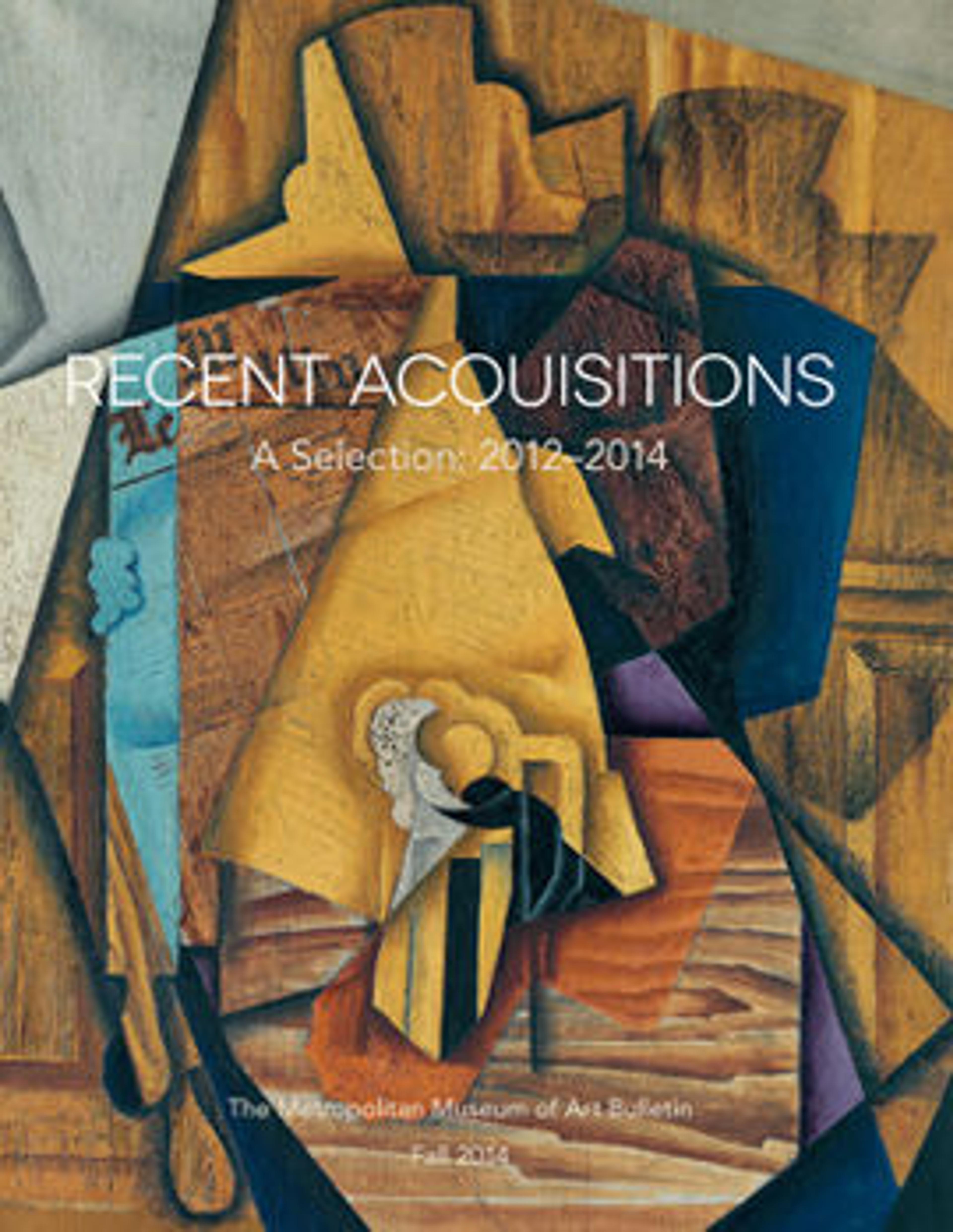Embroidery of a Thousand-Armed Kannon
This exceedingly rare example of late medieval Buddhist embroidery depicts a Thousand-armed Kannon (Japanese: Senju Kannon). Such elaborate textiles were painstakingly stitched as an act of devotion and an individual or group of believers would commission them in order to gain religious merit. Stylistic considerations place this work in the late fifteenth or early sixteenth century, which concurs with radiocarbon dating of thread samples.
Senju Kannon, a manifestation of a compassionate bodhisattva, has eleven heads (jūichimen) and multiple arms. Though senju literally means “one-thousand arms,” sculpted and painted version of this deity often reduce the arms to a finite number, such as ten. Here, the palms of the deity’s central hands are pressed together to form a gasshō, a gesture of greeting and reverence. Other hands wield a hand drum, pilgrim’s staff, trident, Dharma wheel, wish-granting jewels, bow and arrows, bell, and prayer beads. The figure of Kannon stands on a lotus platform surrounded by a mandorla with eleven disks on lotus flower supports. Above the figure are orbs representing the moon and sun. The Japanese characters jūban 十番 above the figure indicates that this work is from the “tenth” temple in the Eighty-Eight Temple Pilgrimage Route of Shikoku Province.
Senju Kannon, a manifestation of a compassionate bodhisattva, has eleven heads (jūichimen) and multiple arms. Though senju literally means “one-thousand arms,” sculpted and painted version of this deity often reduce the arms to a finite number, such as ten. Here, the palms of the deity’s central hands are pressed together to form a gasshō, a gesture of greeting and reverence. Other hands wield a hand drum, pilgrim’s staff, trident, Dharma wheel, wish-granting jewels, bow and arrows, bell, and prayer beads. The figure of Kannon stands on a lotus platform surrounded by a mandorla with eleven disks on lotus flower supports. Above the figure are orbs representing the moon and sun. The Japanese characters jūban 十番 above the figure indicates that this work is from the “tenth” temple in the Eighty-Eight Temple Pilgrimage Route of Shikoku Province.
Artwork Details
- 刺繍千手観音図
- Title:Embroidery of a Thousand-Armed Kannon
- Artist:Unidentified artist Japanese
- Period:Muromachi period (1392–1573)
- Date:probably late 15th–early 16th century
- Culture:Japan
- Medium:Hanging scroll remounted on a panel; embroidered silk appliquéed to cotton backing
- Dimensions:Overall: 76 3/4 x 31 1/8 in. (195 x 79 cm)
- Classification:Textiles-Embroidered
- Credit Line:Purchase, Sue Cassidy Clark Gift, in memory of Terry Satsuki Milhaupt, 2013
- Object Number:2013.114
- Curatorial Department: Asian Art
More Artwork
Research Resources
The Met provides unparalleled resources for research and welcomes an international community of students and scholars. The Met's Open Access API is where creators and researchers can connect to the The Met collection. Open Access data and public domain images are available for unrestricted commercial and noncommercial use without permission or fee.
To request images under copyright and other restrictions, please use this Image Request form.
Feedback
We continue to research and examine historical and cultural context for objects in The Met collection. If you have comments or questions about this object record, please contact us using the form below. The Museum looks forward to receiving your comments.
